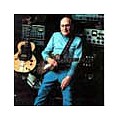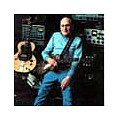This week marks the 100th birthday of one of the greatest innovators in music history, Les Paul.
Not only was Paul a popular performer, but his inclination to tinker and invent led to the development of the solid body electric guitar, multitrack recording, tape delay, phasing and a number of other innovations.
Born Lester William Polsfuss in Waukesha, Wisconsin, on June 9, 1915, Paul started playing harmonica at the age of eight before learning the piano and then switching to guitar. An innovator from the beginning, Paul invented the neck-worn harmonica holder that enabled him to accompany himself on guitar at the same time. He then experimented by wiring a photograph needle to the acoustic instrument, connecting it to a radio speaker to amplify his sound. While still in his teens, Paul created the first solid-body electric guitar with a two-foot piece of rail from a train line. He eventually built his most famous instrument in 1940, the Gibson Les Paul, dubbed "The Log"—from a chunk of 4×4 pine with strings and a pick-up—after hours at an Epiphone factory. Later on, he revolutionized the art of making records by introducing multi-track, sound-on-sound recording techniques still used to this day, including tape delay and phasing effects.
Paul met a country singer named Iris Colleen Summers in 1945, and the two began working together three years later after she adopted the stage name of Mary Ford, marrying in 1949. During the seminal years of their recording career as a duet for Capitol Records starting in the early 1950s, Paul and Ford incorporated his sound-on-sound recording techniques, masterful guitar playing and her vocal styling and released four, landmark albums that contained their interpretations of songs that were destined to become standards and, in large part, classics of the Great American Songbook—with a balance of instrumental performances and with Mary singing upfront.
Among their first hits are classics like the No. 1 1951 record How High the Moon (inducted into the Grammy Hall of Fame), the No. 2 The World Is Waiting for the Sunrise, the Top 10 I'm Sitting on Top of the World and the chart-topping Vaya Con Dios (also in the Grammy Hall of Fame), the latter was the theme song to the pair's popular TV show. These songs all featured Ford harmonizing with herself (thanks to Paul's multi-tracking innovation), utilizing "close miking" techniques over her husband's multiple guitars. Those pop hits, as well as instrumental tracks that spotlighted Paul's "galloping" solo guitar work, such as Guitar Boogie, Brazil, Caravan, Blue Skies and Begin the Beguine.
The jazz, country and blues guitarist, songwriter, luthier and inventor was inducted into the Rock and Roll Hall of Fame as an "architect" in 1988 by Jeff Beck, who said, "I've copied more licks from Les Paul than I'd like to admit." He is one of only a few artists with a permanent, stand-alone exhibit at the Cleveland landmark, and the only person included in both the Rock and Roll Hall of Fame and the National Inventors Hall of Fame. His innovative playing style included such now-standard techniques as licks, trills, chording sequences and timing which have revolutionized the instrument.
To celebrate the 100th anniversary of Paul's birth, Universal Music Enterprises is releasing a number of his most influential albums to the digital marketplace for the first time including The New Sound, The New Sound Volume 2, Bye Bye Blues, The Hit Makers, Hawaiian Paradise and Galloping Guitars. All are available today.
Also hitting stores today is a brand new ten track hits album Les Paul: Icon.
Guitar Boogie
Brazil
Caravan
How High the Moon (Les Paul and Mary Ford)
The World Is Waiting for the Sunrise (Les Paul and Mary Ford)
Lover (When You're Near Me)
Tiger Rag (Les Paul and Mary Ford)
Blue Skies
Begin the Beguine
Vaya Con Dios (Les Paul and Mary Ford)
I'm Sitting on Top of the World (Les Paul and Mary Ford)
Les Paul news





